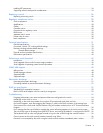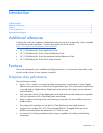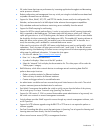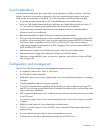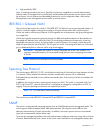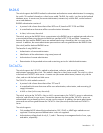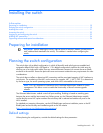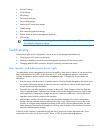Introduction 12
are members of a specific IP network. This is achieved by configuring the address/mask of that specific
network as a restricted management network address/mask.
Port mirroring
The switch allows mirroring of one or multiple ports (source ports) to another port (destination port) for
network monitoring and troubleshooting purposes. This technology offers a way for network packet
analyzers to view the traffic moving through the switch by providing a copy of the traffic that is currently
being passed through any other port. The packets are sent to a network packet analyzer or other
monitoring device attached to the mirror port.
Port trunking and load balancing
The switch supports EtherChannel compatible IEEE 802.3ad (without LACP) port trunking allowing several
ports to be grouped together and act as a single logical link called a trunk. This feature provides a
bandwidth that is a multiple of the bandwidth of a single link. It also improves reliability since load
balancing is automatically applied to the ports in the trunked group. A link failure within the group causes
the network traffic to be directed to the remaining links in the group.
TFTP support
TFTP support allows the switch firmware to be upgraded by downloading a new firmware file from a TFTP
server to the switch. Firmware images of the switch are also uploaded to a TFTP server, a configuration
file is downloaded into a switch from a TFTP server, and configuration settings are saved to the TFTP
server.
Store and forward switching scheme
The switch provides a store and forward switching scheme that allows each packet to be buffered (stored)
before it is forwarded to its destination. While this method creates latency, it improves reliability in a
heavily used switch. Packets that cannot be forwarded are saved immediately, rather than dropped, so
that packets behind them are less likely to be dropped in periods of heavy usage.
BOOTP
By default, the switch is configured to obtain an IP address from a BOOTP server during the boot process.
The IP settings are also manually configured by means of the serial interface. The IP settings are
configurable from the browser-based interface, but because the connection is based on an IP address for
these interfaces, users will have to reconnect with the newly assigned IP address.
NTP
The switch maintains the current date and time. This information displays on the management interfaces
and is used to record the date and time of switch events. Current date and time information are manually
set on the switch or are obtained through NTP. NTP allows the switch to send a request to a primary NTP
server in each polling period asking for GMT.



